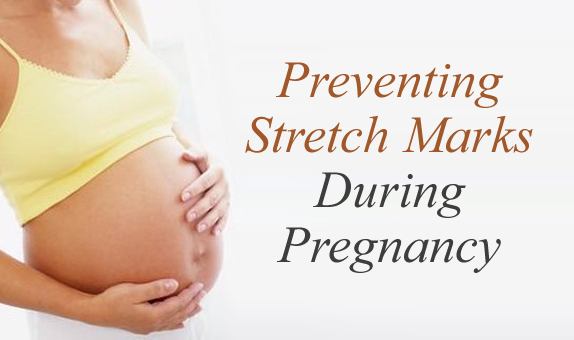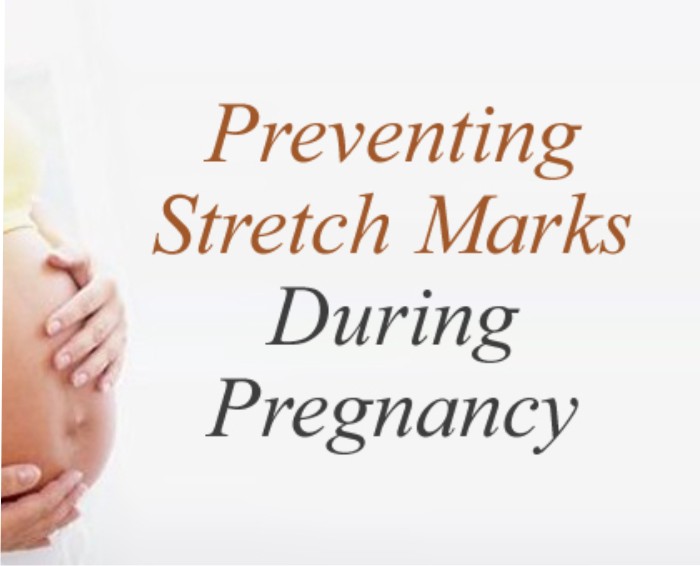Stretch marks ! While it’s important to know why, how and where stretch marks form in pregnancy, even more important is to know how to help prevent them from forming in the first place.
Most pregnant women fear them. Many won’t even talk about them. Some particularly enlightened ones wear them proudly as a “badge of motherhood”. Though your baby’s not even born yet, she’s already started to leave her mark when you’re somewhere around 13 weeks to 21 weeks pregnant. More than half of all expecting women get these pink or red (sometimes purplish) streaks; you’ll most likely notice them across your belly, butt, thighs, hips, and breasts.
A previous post titled Pregnancy Stretch Marks covers all that you need to know about stretch marks and here we cover what you can possibly do to prevent stretch marks.
What Can Be Done To Prevent Stretch Marks?
One’s best defense against stretch marks is to ensure that skin maintains its maximum elasticity throughout pregnancy. This is achieved by keeping skin well-hydrated and supple at all times. The American Pregnancy Association suggests a combination of steps that can be taken to prevent stretch marks.
1. Nourish your skin from the inside :
Collagen and elastin fibers in the skin are necessary to keep rapidly growing skin taut, and the stronger they are, the less likely they are to break and leave resulting stretch marks. It therefore makes sense to eat foods that are rich in Vitamin E and C, zinc and silica, which help to form collagen. Vitamin C in particular is an important antioxidant that helps protect tissue from damage. Vitamins B2 (Riboflavin) and B3 (Niacin) are also said to help promote and maintain healthy skin.
2. Hydrate :
Drinking sufficient water (approximately 2 liters a day) is essential in order to help strengthen and renew your skin.
3. Exercise :
In addition to boosting energy levels, reducing mood swings, improving sleep patterns and enhancing one’s overall self-image, exercise too can help prevent stretch marks. Exercise improves circulation, which keeps the skin elastic and more able to stretch as it grows. This improved circulation also reduces the possibility of varicose veins and swollen ankles in pregnancy.
4. Moisturise to keep your skin supple :
In addition to ensuring that you keep your skin supple through eating the right foods and getting enough exercise, you could use any regular oil like olive oil to maximize the skin’s elasticity.
5. Start early :
By following proper steps from the first trimester, your body will be better able to withstand the “big stretch” of pregnancy! Start applying oil or deep moisturiser twice daily from the first trimester itself throughout pregnancy, your skin will remain well-hydrated and better able to stretch.
Related reading:
